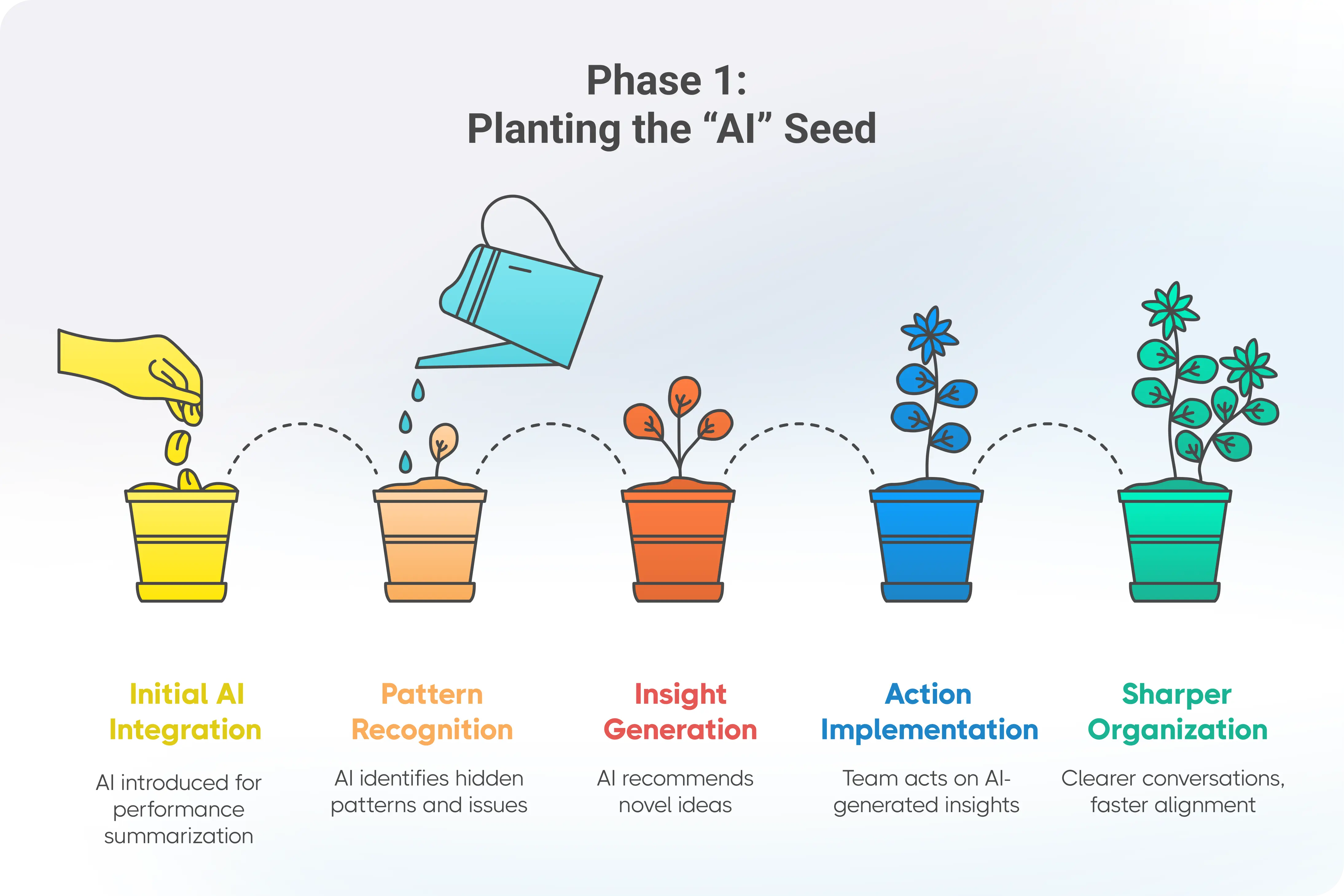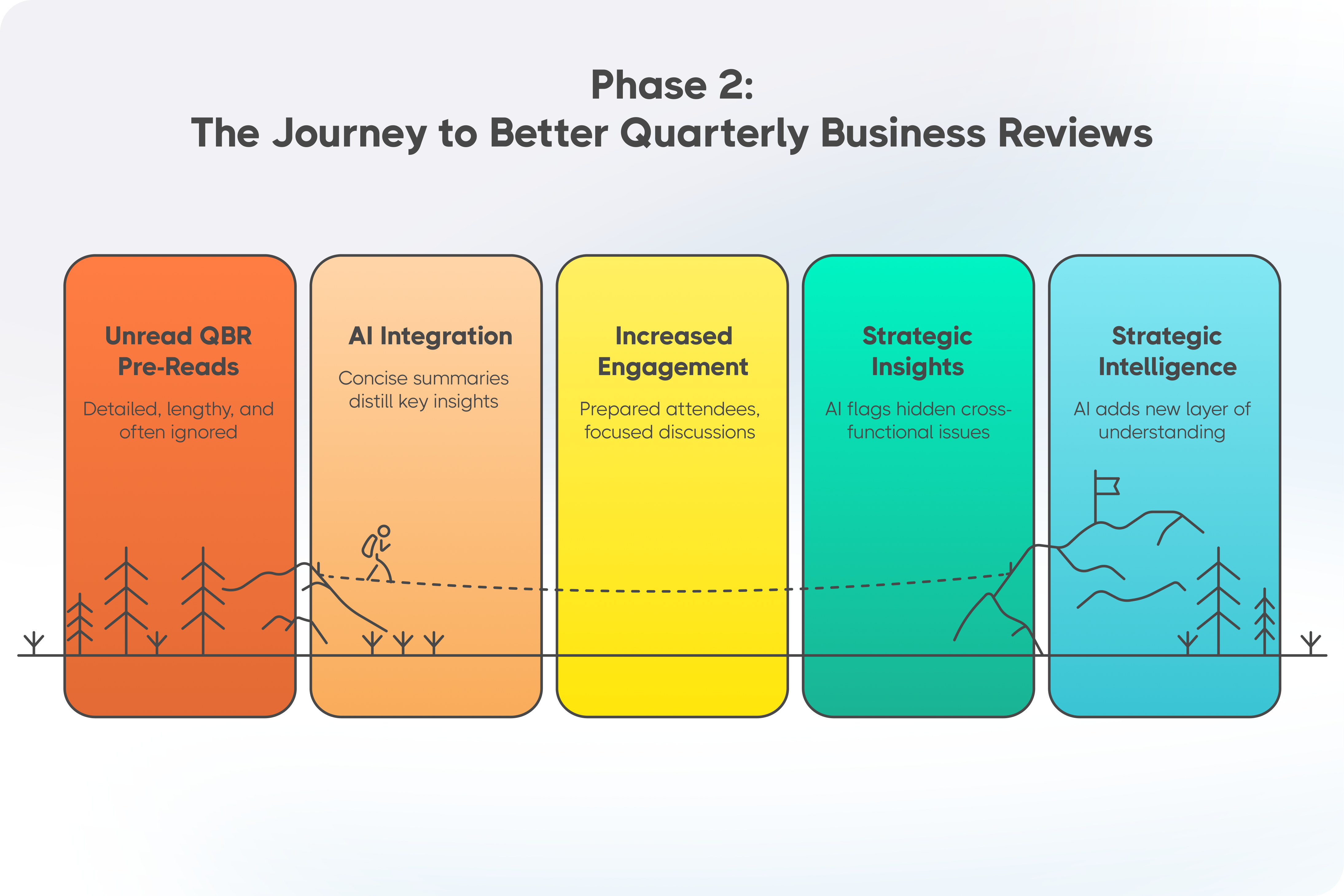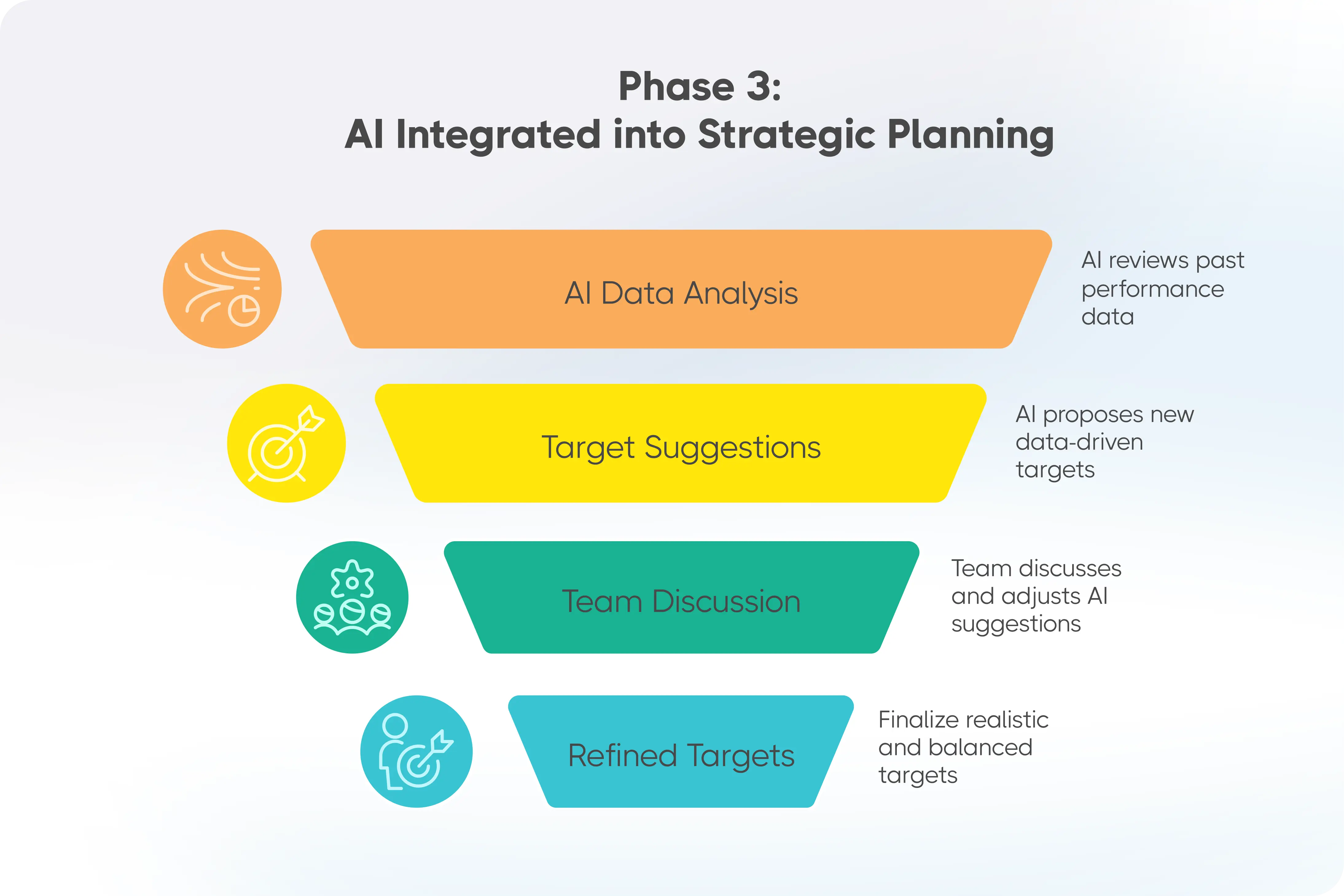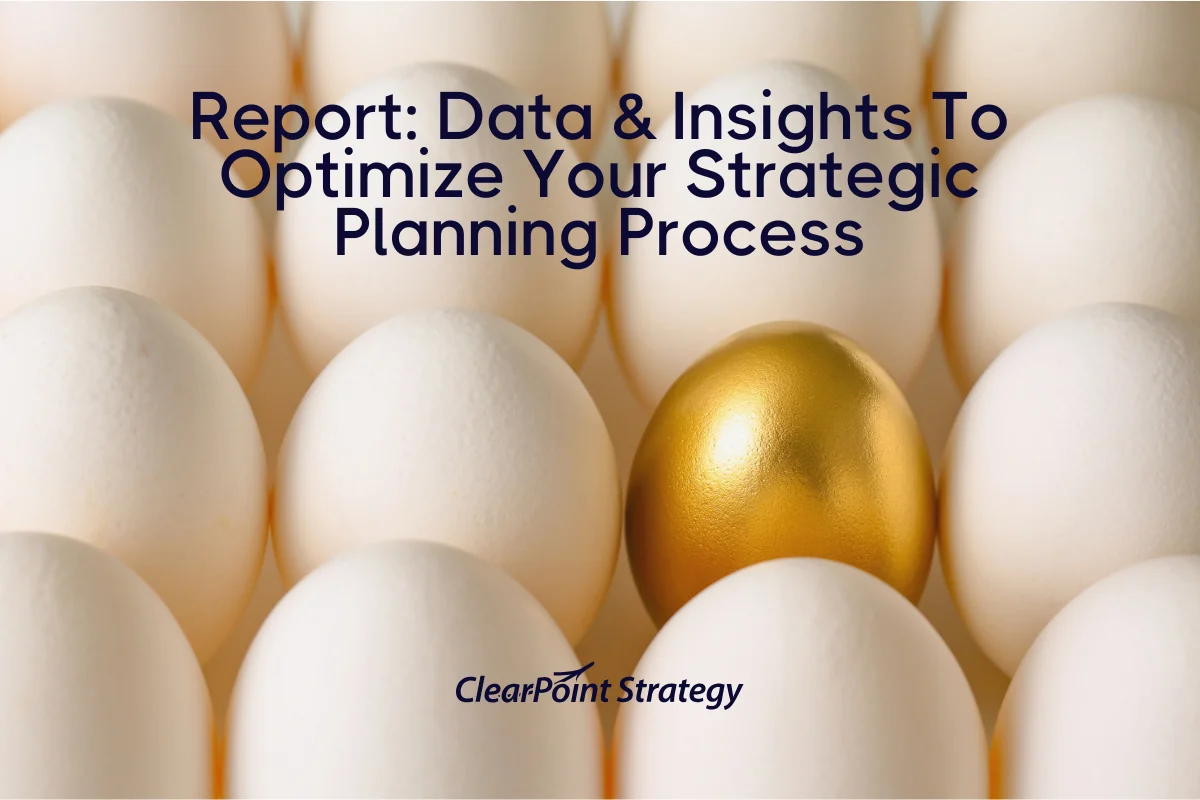What happens when a high-performing executive team adds AI to the strategy table?
We like to think of ourselves as a quintessential Balanced Scorecard organization. Our strategy lives inside ClearPoint—our own software—and we formally report on it quarterly. Our executive team meets monthly, and there’s a genuine sense of alignment across departments. Sales, marketing, customer success, product, operations—everyone knows the strategy and how their work supports it. We communicate well. We trust each other. On paper, we were already doing everything right.
So why did we bring AI into our strategic decision-making process?
Phase One: From AI Curiosity to Strategic Clarity

The truth is, this evolution didn’t happen overnight. It started small. We introduced AI into ClearPoint to support our clients by summarizing performance at the KPI and project level. It was designed to speed up analysis, not change how we ran our company.
But something interesting started to happen. The summaries AI generated occasionally picked up on patterns we hadn’t seen or highlighted issues we hadn’t yet discussed. In some cases, the AI even recommended ideas that weren’t on our radar.
It wasn’t perfect, of course. But it was helpful—more helpful than we expected. Our team started acting on some of those insights. The result? Clearer conversations, faster alignment, and better execution. We were becoming a sharper organization, just by listening to a new kind of voice at the table.
Phase Two: Rethinking the Quarterly Business Review

Next, we integrated AI-generated summaries into our quarterly business reviews. For years, we’d circulated a detailed 30-page pre-read before each QBR. It was comprehensive, but it had a problem: not everyone read it.
With AI, we added a concise, one-page summary that distilled key insights across the Balanced Scorecard. The change was immediate. Engagement went up. People showed up prepared. Discussions were more focused.
The AI wasn’t just simplifying content—it was reframing our understanding of performance. One quarter, it suggested we focus less on customer success and more on sales because that’s where the pressure was greatest. Another time, it flagged a cross-functional issue that hadn’t been raised by any one department.
It became clear that the AI wasn’t just echoing back what we already knew. It was adding a new layer of strategic intelligence.
Watch Now: How to Run Effective Strategy Review Meetings
Phase Three: Smarter, Saner Strategic Planning

Then came the most surprising shift: using AI in our strategic planning process.
Each year, like many organizations, we set ambitious targets. Maybe too ambitious. We believed in our team, and we set goals accordingly. But ambition without realism can backfire.
So we asked the AI to help. It reviewed our past performance and suggested initial targets grounded in data. We didn’t just accept them blindly—we debated, adjusted, refined. But it gave us an unbiased starting point.
That one change brought our conversations to a new level. We spent less time arguing about what was possible and more time aligning around what mattered. The result? More realistic, better-balanced targets—and a stronger sense of ownership across the team.
Lessons Learned: AI as an Executive Team Enhancer
This isn’t a story about AI replacing the executive team. Far from it. Strategy is still human work. It requires vision, experience, judgment, and empathy—qualities AI can’t replicate.
But AI made us better. It surfaced patterns we missed. It gave us a reality check when we needed one. It enhanced how we worked together.
The real value came from the collaboration. AI brought data-driven insight. We brought context and leadership. Together, we made smarter decisions.
The Future of Strategy Is AI-Enhanced
I wouldn’t frame this as “AI vs. Executive Team.” That’s a false choice. What we’ve learned is that the best-performing organizations will be those that embrace an “AI-enhanced Executive Team.”
It takes humility to accept that a machine might see something you don’t. But it also takes wisdom to use that insight without losing your own judgment.
At ClearPoint, AI hasn’t replaced our strategy process. It’s become an essential part of it. And I believe the organizations that thrive in the future will be those that treat AI not as a threat, but as a partner in strategic thinking.
Want to See How AI Can Elevate Your Executive Team?

.svg)
.png)



![How To Do Strategy Execution Like The Top 1% [DATA]](https://cdn.prod.website-files.com/637e14518f6e3b2a5c392294/6943dc61ad7ba3aa1e7a00ae_how-to-do-strategy-execution-like-the-top-data-blog-header.webp)
![How Often Are Strategic Initiatives Completed? [DATA]](https://cdn.prod.website-files.com/637e14518f6e3b2a5c392294/694081943dbced2358f47d83_how-often-are-strategic-initiatives-completed-data-blog-header.webp)